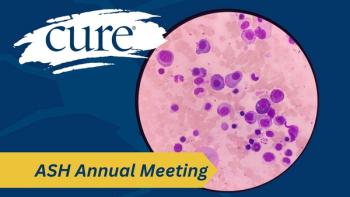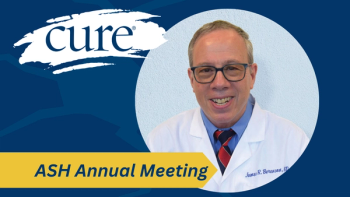
How Bone Strengtheners Led to a Dental Care Nightmare for One Patient With Cancer
A woman living with stage 4 cancer explains her painful experience with dental issues that came as a result of cancer treatment.
Stage 4 cancer survivors live with cancer as well as the possible fallout from lengthy cancer treatments and the long-term side effects of those chemicals. The drugs that save us can also compromise our health.
Bone strengtheners are one example. When I was diagnosed with innumerable bone metastases in late 2015, my oncologist prescribed monthly Xgeva (denosumab). The treatment intervals eventually rose to six months and I’ve been taking Xgeva ever since. I’ve had no fractures or additional metastases appear since that time.
I can walk, hike and live my life without worrying about bones (for the most part). I’m grateful, knowing that in the past, those with compromised bones suffered extensive damage that can now be avoided.
How do bone strengtheners work?
These drugs (Prolia, Xgeva, ibandronate and Zometa) prevent the build-up of painful, (sclerotic) lesions, (or extra bone) which was what my metastases caused, according to Breastcancer.org. The drugs also prevent the retreat — lytic response — of bone tissue which makes bone prone to fractures — think Swiss cheese. The drugs coat the bones and block the normal osteoclastic and osteoblastic (healing) action of bone tissue. It’s all good, right?
I discovered the dark side of these drugs when I had a toothache last summer. Rather than deciding my horrible jaw and head pain was more cancer, I decided it was a tooth thing that could be easily fixed.
My dentist poked around and thought some infection might be in the root. She drilled out the old filling and replaced it with a temporary filling that contained antibiotics. The pain improved, but then returned a few weeks later as bad as ever.
My regular cleaning was scheduled, so I explained the situation to my dentist. He (different town, different dentist) tapped on the tooth which about brought me out of the chair. His next words were, “How do you feel about a root canal?”
Well, the tooth was the last one in the back. I’m 69 years old and I’ve had stage 4 cancer for six years. It seemed silly to spend a lot of money on a tooth no one sees and one that I won’t even need within a few years.
Within a few days I decided against a root canal and crown and asked for a referral to an oral surgeon. I did ask the dentist about risks from taking bisphosphonates (like Xgeva) for six years. He felt there was definitely a risk and said to discuss it with the oral surgeon.
I asked for a consultation before surgery on the day of my appointment to get the tooth pulled. The $165 price tag sounded great (I’m on Medicare). The surgeon mentioned a blood test that would indicate the likelihood of wound healing when I hesitated to go ahead with the surgery.
I left his office with a prescription for a C-Telopeptide Beta-Cross-Linked Serum blood test, leaving behind a counter lined with implements of torture and a lengthy disclaimer form saying I was aware it was likely I would have post-operative problems because I took bisphosphonates.
What were the likely problems? The same cellular activity that makes bone strengtheners effective also results in unintended consequences. Normally, the body is able to fill in bone gaps and heal bone by sending cells to regenerate tissue. Bone strengtheners block this activity. They coat the bones that anchor teeth. The maxilla holds upper teeth, and the mandible holds the lower teeth. These drugs prevent bones from reabsorbing and rebuilding after a tooth is pulled.
I wondered if it would help to just go off Xgeva for a few more months. I’d already been off it for six months. That wouldn’t help. Bone strengtheners last a long time in the body. Patients with bone metastases continue taking them for years.
The inability of bone to heal makes extractions and dental implants downright dangerous for patients with cancer. I had no idea, and others may find themselves in the same situation. Patients may be unaware of the risks until the dentist or oral surgeon hands them a release form to sign.
I don’t remember if my oncologist told me to get my dental work done before starting treatment, but if he did, it was years ago when everyone thought I’d be dead in two years.
What’s the worst that can happen?
After a tooth is pulled, the hole left in the bone and the tissue surrounding the socket heals and covers the opening, normally in six to eight weeks depending on the tooth size and type/difficulty of the extraction, according to Dental Partners of Boston. Patients taking bone strengtheners often find that neither the bone nor the tissue heal. The open wound gets infected repeatedly.
Sometimes it reveals a condition known as osteonecrosis of the jaw (ONJ). The term actually means bone death of the jaw. As explained by Breastcancer.org, with ONJ, chips of bone may slough off from the damaged jaw bones and slowly work their way to the surface of the gum. Patients often face pain and recurring infections until the bone chips eventually fall out. ONJ is miserable.
I did more research while I waited for the blood test results. The tests would indicate the levels of osteoblastic and osteoclastic cells needed for bone healing. A normal range for post-menopausal women is 104-1008, according to ARUP Laboratories. A result under 150 indicates a high risk for post-operative trouble. My number was 75. No extractions for me.
A root canal and crown, at $3,800, was my only option. I made an appointment with the endodontist. This process works because the tooth stays in place with no bone involvement. It heals quickly because it doesn’t invade any tissue outside the tooth itself.
While I was in the chair for the root canal I learned more. The chairside assistant said her brother had this issue and he’d been hospitalized three times in the past year for infections where a tooth was removed.
The endodontist stopped halfway through to tell me the tooth was badly cracked and normally he wouldn’t even try to fix it. The crown might only work for two to five years. A serious case of putting lipstick on a pig.
The bone strengthener situation drove the dental treatment decision. It took a lot of time in the dental chair and a lot of money out of pocket for a temporary solution. I’m still glad I did it.
I found help with some of my costs of living. That made it easier to pay down the dental costs. I worked with the social worker at my local cancer center. She was able to find an unrestricted grant that helped cover rent and utilities for one month.
There’s no way to predict when a tooth will go bad. It seems ridiculous to those of us living with stage 4 cancer to spend this much for tooth repair. That said, I use extraordinarily expensive treatments every day just to stay alive. Life’s more enjoyable when I can live without constant pain, recurring infections and dental problems that pile on to an already complicated balance of life.
What advice do I have for other patients with cancer taking bone strengtheners who get a toothache?
- Tell your dentist you are taking bone strengtheners or bisphosphonates
- Get a blood test done before scheduling any oral surgery
- Ask the social worker at your cancer center if any financial assistance is available if you need it
Two months later, I can eat and drink without pain. I still have good quality of life even six years into a stage 4 diagnosis. Protecting that quality makes living with cancer more like life before cancer and for me, it’s worth the cost.
For more news on cancer updates, research and education, don’t forget to





